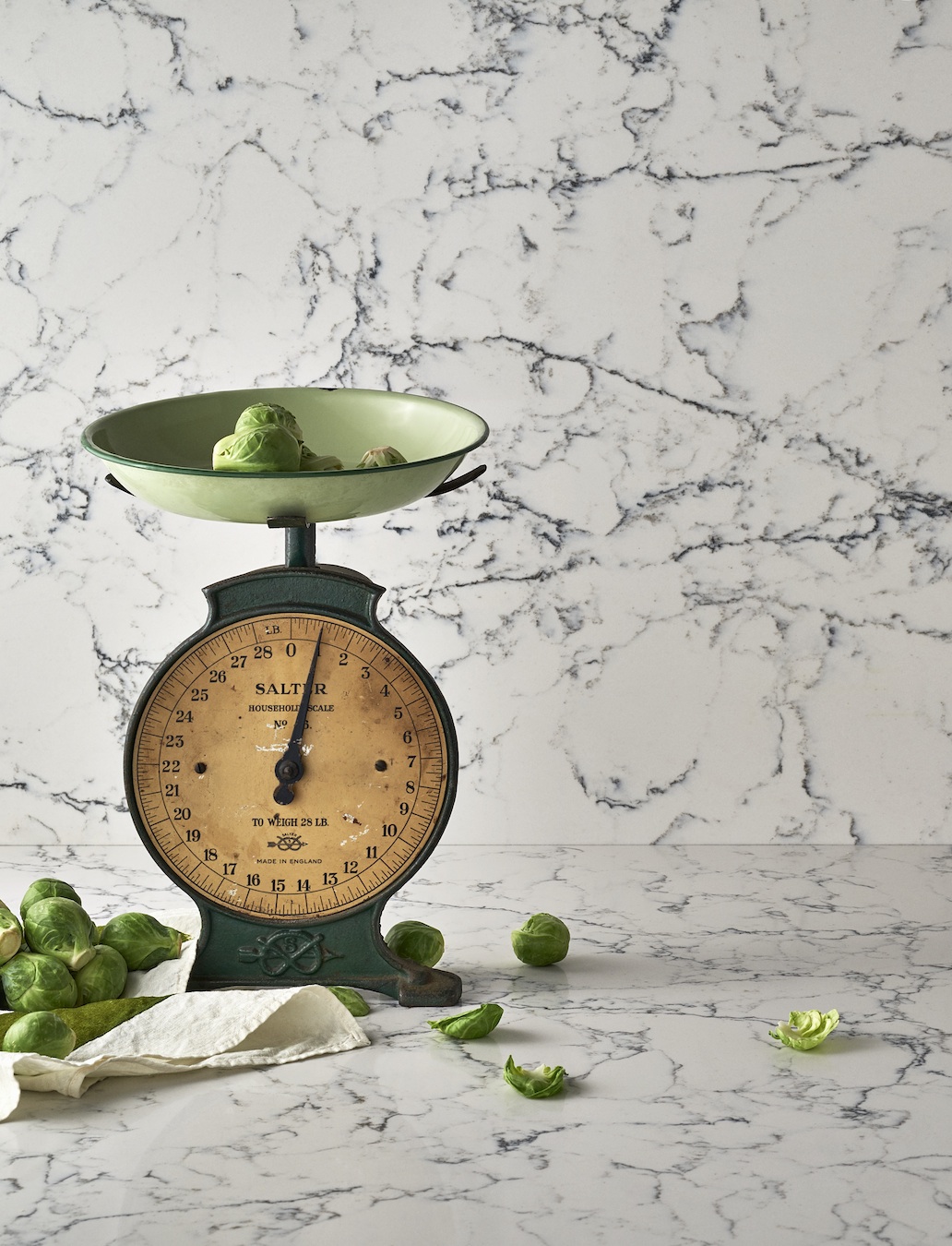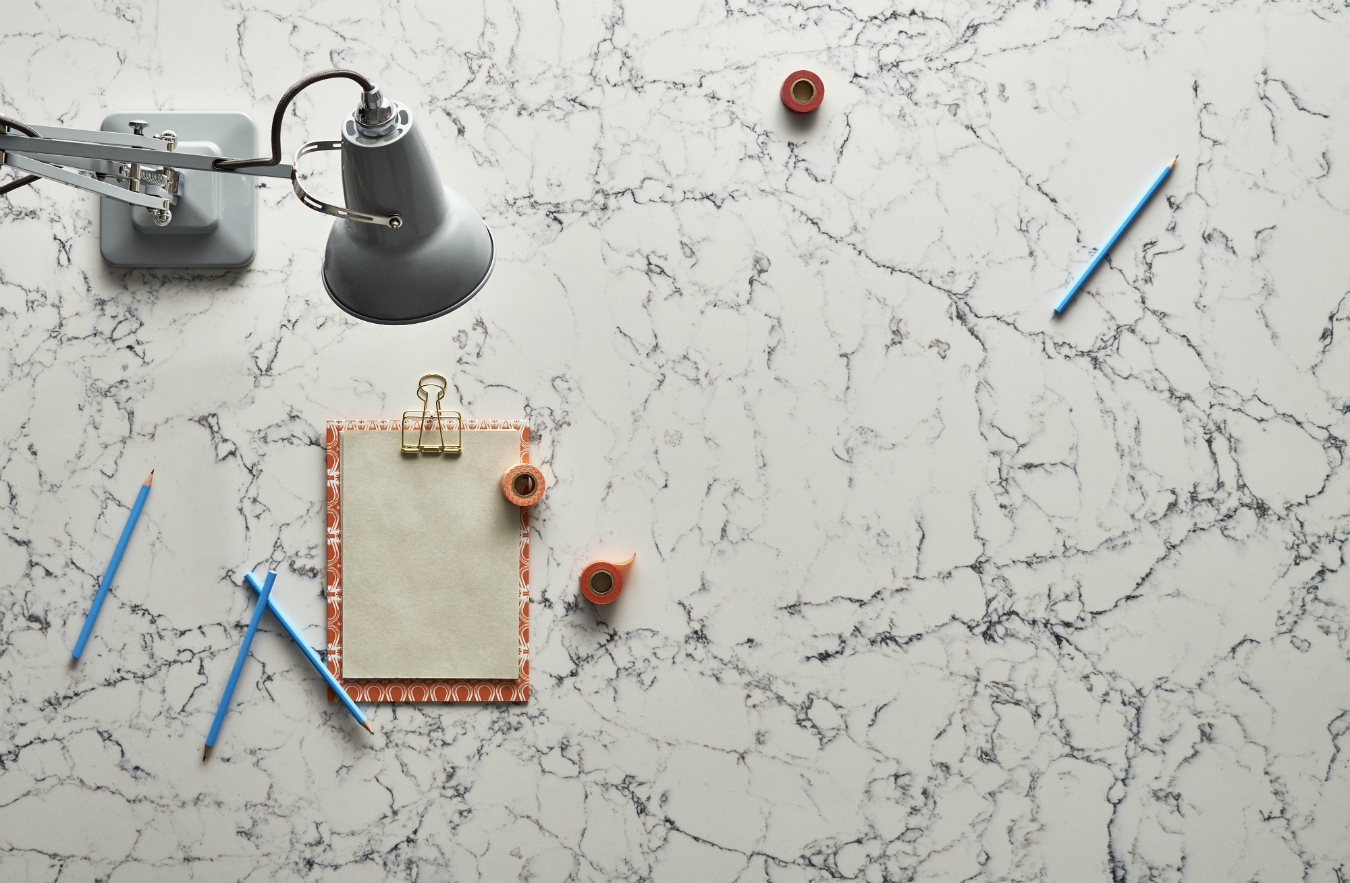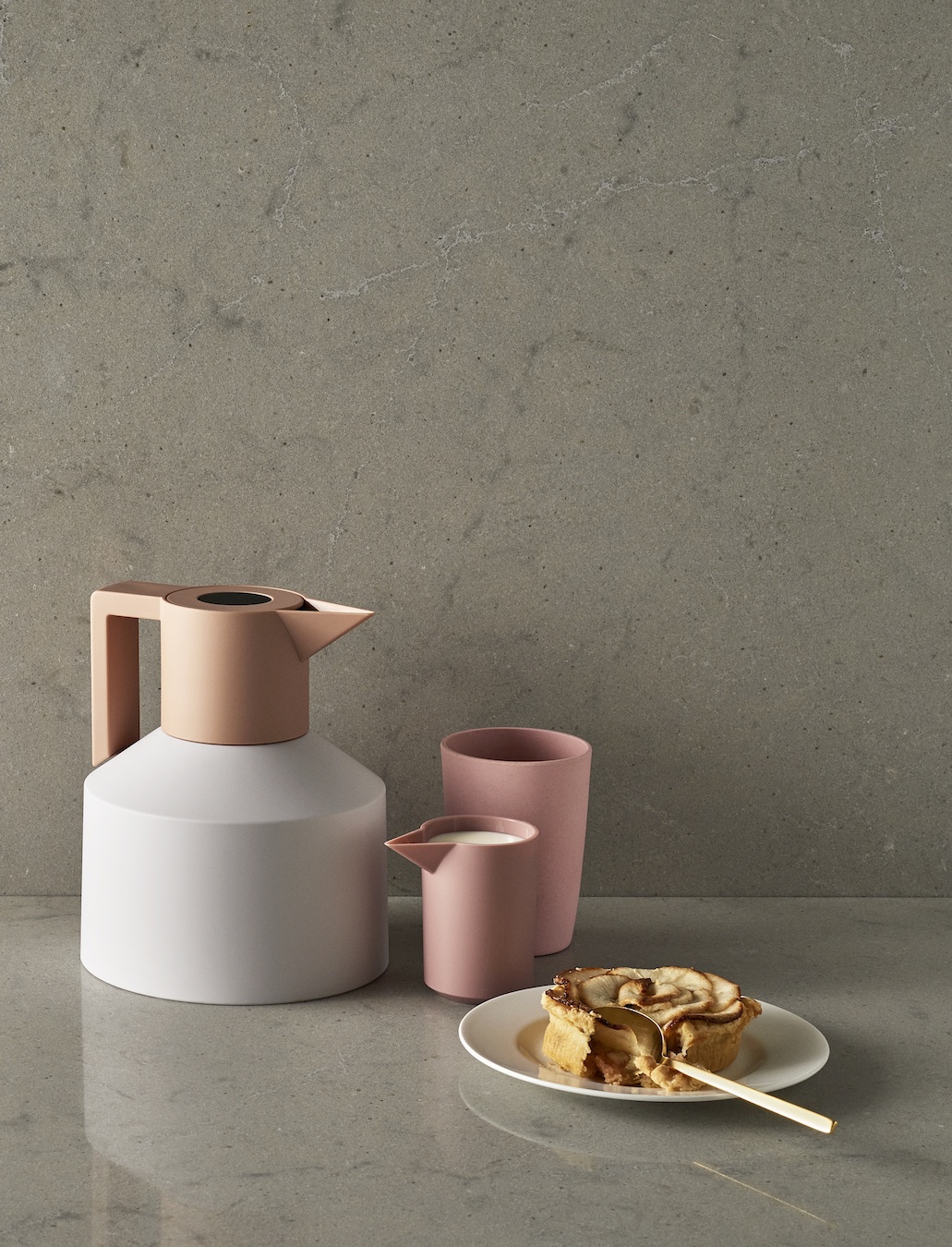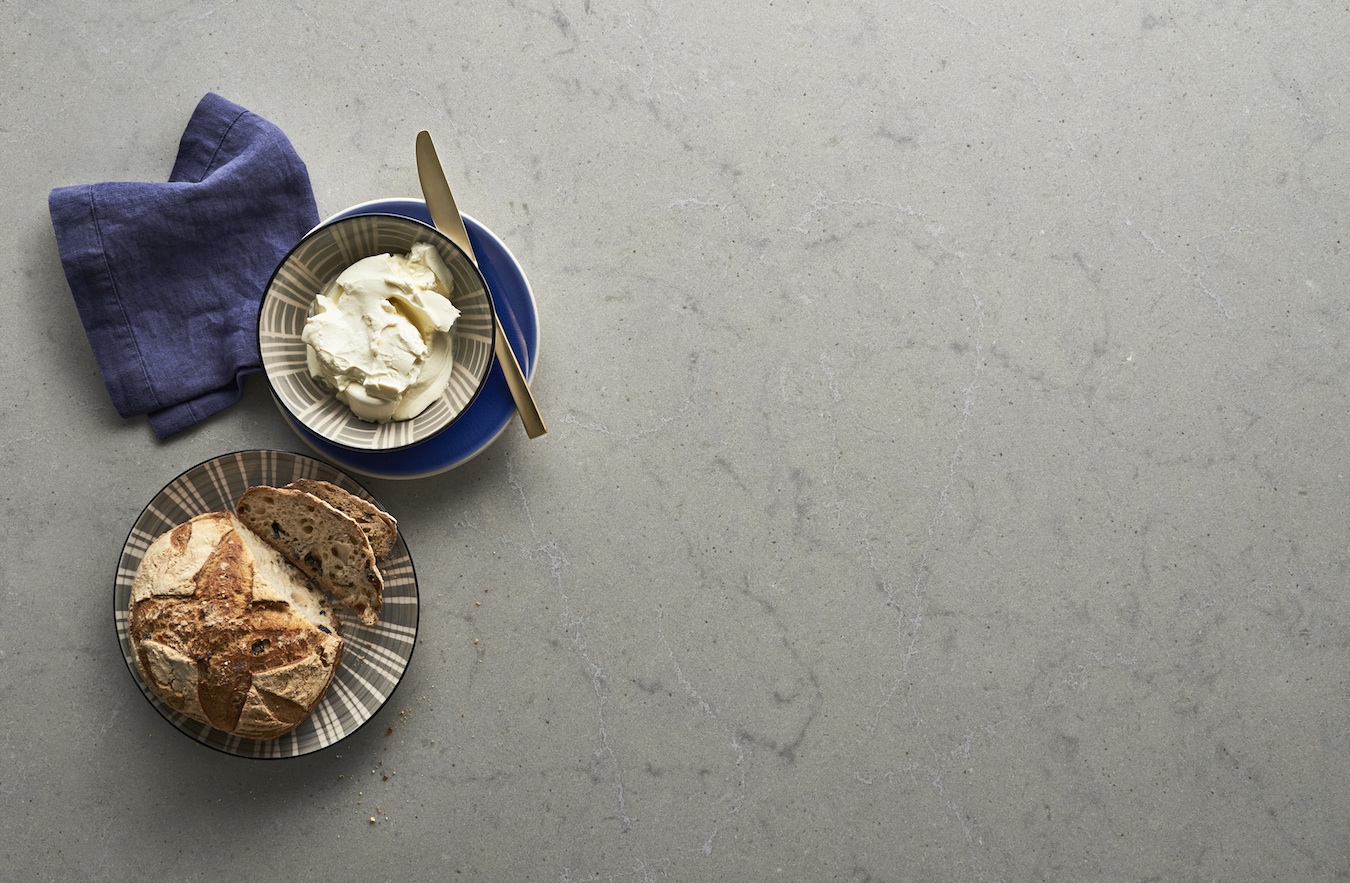If you are in the process of building or renovating your living space, kitchen countertops are bound to be part of the discussion—whether you soldier on alone or are working with an interior designer or a contractor, or both. But you owe it to yourself to explore options, which include the ever-popular granite, the more high-maintenance but beautiful marble, or, increasingly, natural quartz manufactured surfaces, in which the category leader is Caesarstone. The local distribution centre, where the contractors, designers, and retailers go, is where the large-size samples reside, in an almost bewildering array of colour and pattern options. From there, more manageable samples go to the various retailers, and choices can be made.
In times past, the criticism of manufactured quartz surfaces was that they looked too perfect, not natural enough to rival the unique whorls and swishes of marble or the complexity of granite. But Caesarstone has introduced techniques to create more random, natural patterns into its process, which involves natural quartz, resins, and colouring, with the mixture melted and poured into molds to create slabs of product ready to use. So, depending on your taste, and also depending on the ultimate purpose for your countertop, you can now have either a formal, sustained, consistent look, or a more natural, free-flowing one.
Caesarstone recently collaborated with designer Tom Dixon, and the resulting kitchens, themed upon ice, fire, earth, and air, are being rolled out at design exhibitions across the world. On a more intimate level, the two newest quartz designs, titled Attica White and Georgian Bluffs, are entering distribution gobally, and either can be part of your kitchen plans soon. These two new looks embody the trend toward more natural aesthetics for Caesarstone. Your dinner guests, hanging around the cooking area with their glass of wine, waiting patiently while you simmer your pasta sauce, will be resting their stemware on a beautiful surface that is heat, stain, and scratch resistant, all without any need for sealers or any other precautionary treatments. How can you do any better?
Stay up to date. Read more from our Design section.












